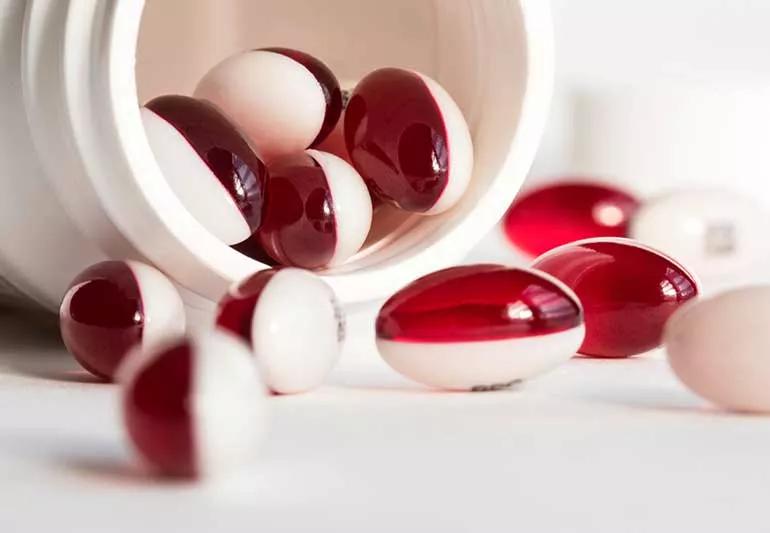Stool softeners are a type of laxative that softens your stool, making it easier to poop

If you’re like most people, you probably have difficulty pooping from time to time. It’s not one of life’s greatest experiences, but hopefully it, well … passes.
Advertisement
Cleveland Clinic is a non-profit academic medical center. Advertising on our site helps support our mission. We do not endorse non-Cleveland Clinic products or services. Policy
But if you have fewer than three bowel movements per week or hard, lumpy stools that are difficult to pass, you may have constipation.
When constipation happens, that blocked feeling may send you to the drugstore for relief. Stool softeners and laxatives are two types of home remedies to relieve constipation. Other home treatments include lifestyle changes, such as increasing fiber, water and exercise.
“Lifestyle changes may improve mild constipation,” says gastroenterologist Samita Garg, MD. “But if your symptoms continue or are more severe, a stool softener or laxative may help get your bowel movements back on track.”
Laxatives are substances that help you poop. Stool softeners are just one of several types of laxatives, and laxatives can work in different ways.
Bulk-forming laxatives contain fiber that your body can’t digest. In your colon, the fiber “bulks up” the stool by drawing and keeping water in. This action softens the stool and stimulates your bowels (intestines). Some examples include psyllium (Metamucil®), methylcellulose (Citrucel®) and wheat dextrin (Benefiber®). A few tablespoons of fiber-rich chia seeds in water along with some lemon juice, also known on TikTok as an internal shower, can have a similar effect.
Advertisement
These laxatives draw water into the colon, which softens the stool and stimulates your bowels. Examples include magnesium hydroxide (Phillip’s Milk of Magnesia®), polyethylene glycol (MiraLAX®) and a sugar-based laxative called lactulose.
These laxatives work directly on the walls of your intestines and signal your nerves and muscles to contract and push the stool along. Stimulant laxatives include senna (Senokot®) or bisacodyl (Dulcolax®).
An enema is a solution you flush into your rectum. Enema laxatives include mineral oil, tap water and soap suds. These act as a lubricant to coat the stool with a slippery substance, so it slides out easier.
Stool softeners increase the amount of water in the stool, making it softer and easier to pass. Docusate sodium (Colace®) or docusate calcium (Surfak®) are common examples.
For most people, Dr. Garg recommends first trying a bulk-forming laxative, like Metamucil or Citrucel. “Fiber-based laxatives are safe and gentle but may take one to three days to work,” she says
A second option is an osmotic laxative, which usually takes about eight hours to take effect. You can also combine an osmotic laxative such as MiraLAX with a bulk-forming laxative. “Consider starting with one dose of fiber and MiraLAX once a day. Then, take more or less, depending on your symptoms,” suggests Dr. Garg.
Stool softeners are also a good option for occasional constipation. They’re particularly helpful if you have hemorrhoids or recently had surgery and have to be careful not to strain during a bowel movement.
Stimulant laxatives are stronger and work quickly but can cause cramping.
“Some studies show that people can also build up a tolerance to these medications over time,” cautions Dr. Garg. “We recommend using them sparingly and for more severe constipation.”
The type of laxative you take matters because there are many causes of constipation. It could just be that you’re not getting enough fiber, fluids or exercise. Maybe you’re under a lot of stress or recently changed your routine.
Chronic constipation can also be a side effect of medication, like opioids, or a sign of a more serious medical condition, such as thyroid disease, colon cancer, or electrolyte abnormalities.
“Treatments may address constipation directly or target an underlying condition,” says Dr. Garg. “For example, new research is shedding light on the connections between your gut and nervous system. Sometimes, we refer patients to psychologists to identify what’s going on in their life that could contribute to their constipation.”
Advertisement
This complexity highlights the importance of seeking medical advice. Dr. Garg recommends talking to a healthcare provider if your symptoms don’t respond to at-home treatments or you experience:
Dr. Garg says don’t take certain types of laxatives in specific situations, including:
Potential side effects of laxatives include cramping, nausea, diarrhea and electrolyte imbalance. But stool softeners and laxatives are generally well-tolerated, says Dr. Garg.
Advertisement
If you’re still experiencing constipation, talk to a healthcare provider. They can evaluate the cause of your symptoms and recommend the most effective treatment to help get things moving again.
Advertisement
Learn more about our editorial process.
Advertisement

Jaundice that’s present at birth or lasts more than a week should be evaluated by a pediatrician

Opt for low-FODMAP foods, like grapes, carrots and soy milk, that are easy to digest and help create a balanced gut

It’s not an enema or bowel prep, and this colonic hydrotherapy can harm proper colon function

Family history can increase your risk of developing this autoimmune disorder — you may want to see a healthcare provider for screening

Choose foods that are easily broken down in your digestive system, like fruits and vegetables without skins or seeds

Focus on exercise, eating healthy and getting regular screenings to help lower your risk

A low-FODMAP diet or gluten-free diet could help you manage your symptoms, but only with professional guidance

A low-fat, high-fiber diet can help prevent gallbladder attacks and keep you pain-free

If you’re feeling short of breath, sleep can be tough — propping yourself up or sleeping on your side may help

If you fear the unknown or find yourself needing reassurance often, you may identify with this attachment style

If you’re looking to boost your gut health, it’s better to get fiber from whole foods